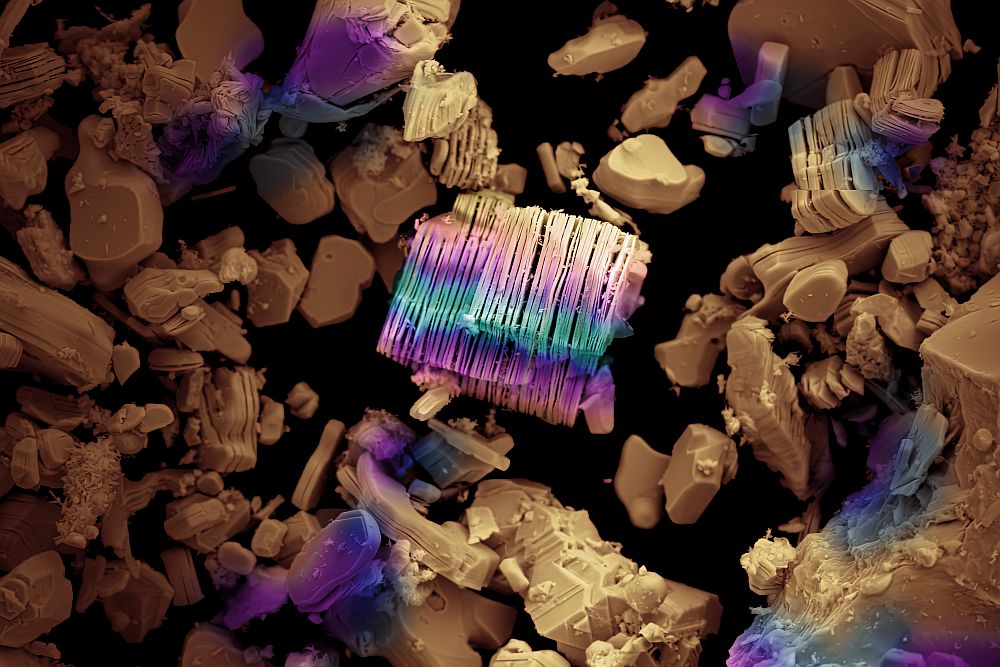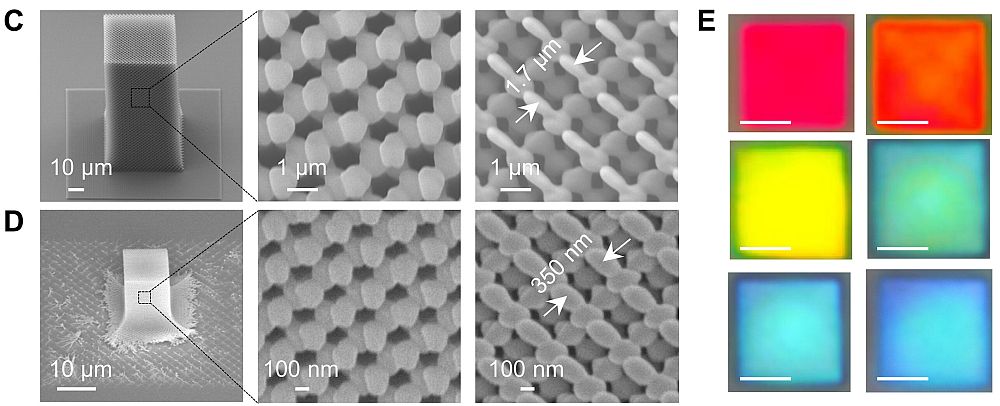
[Image above] Example of a multilayered MXene after etching the parent MAX phase. Scanning electron microscopy image, colored for effect. Credit: Devynn Leatherman-May, Brian C. Wyatt, and Babak Anasori; Purdue University
Graphene is often remembered as the breakthrough materials development in 2004. But two other papers published that year (here and here) laid the foundations for another development that marked a paradigm shift in materials design: high-entropy materials.
High-entropy materials are materials that demonstrate improved mechanical and thermochemical properties thanks to their unique structure. In contrast to traditional doping strategies, which involve adding small amounts of foreign elements to a host lattice, high-entropy materials contain multiple principal elements in near-equimolar proportions that mix to form a new single-phase solid solution.
What makes the structure of high-entropy materials unique is its high configurational entropy. In other words, the specific arrangement of each atom within the single-phase solution is very disordered, so numerous stable arrangements of the components are possible.
While originally the term “high-entropy material” was applied to any material containing five or more elements in roughly equimolar proportions, recently, some groups have called attention to the nuances that are missed with this generous usage.
“Many published reports neglect to calculate configurational entropy to determine if a particular material should be classified thermodynamically as a high-entropy oxide,” a multi-institution group of researchers writes in an open-access APL Materials article. In other words, some multicomponent materials exhibit ordered rather than disordered arrangements of each atom, and these materials should be termed “compositionally complex” rather than “high entropy.”
Determining whether a multicomponent material is high entropy or not “may prove to be rather difficult, requiring an extremely rigorous characterization protocol and a comprehensive understanding of the thermodynamic factors at play,” the group writes.
In a recent paper, another multi-institution group of researchers aimed to help clarify how the term “high entropy” is used by synthesizing and characterizing 40 different layered carbides in the family of MAX phase materials.
MAX phases are atomically layered ceramic materials with the general formula Mn+1AXn, where M is a transition metal, A is a metalloid, and X is carbon or nitrogen. These materials can be selectively etched to create MXenes, the family of 2D transition metal carbides and nitrides, and thus provide a good system to investigate the effect of entropy on both the nano and bulk scales.
The researchers are led by Babak Anasori, Reilly Rising Star associate professor of materials and mechanical engineering at Purdue University. In 2021, Anasori and his students published a paper on the synthesis of two multicomponent MAX and MXene phases, and this new study greatly expands on that nascent research.
They created the 40 different MAX phases with varying numbers of metal combinations, all the way to nine metals. They then transformed these phases into 2D MXenes so both the bulk and nano forms could be analyzed.
They found that when using two to six metals, the resulting structures showed a more or less ordered atomic arrangement, meaning they achieved only “medium” entropy. In contrast, when using seven or more metals, the metals did not follow any preference for order—thus achieving true disorder or “high entropy.”
“For the broad scientific community, this work represents major progress in understanding the role of enthalpy and entropy in the formation and order–disorder transitions in these high-entropy materials,” says first author Brian C. Wyatt, postdoctoral researcher in materials engineering at Purdue, in a press release.
The paper, published in Science, is “Order-to-disorder transition due to entropy in layered and 2D carbides” (DOI: 10.1126/science.adv4415).
* * *
In order to share the findings with an even larger audience, Anasori wrote a song about this work, which he turned into a music track with the help of AI. Check out the song below!

Credit: Babak Anasori, YouTube
Author
Lisa McDonald
CTT Categories
- Basic Science
- Nanomaterials


